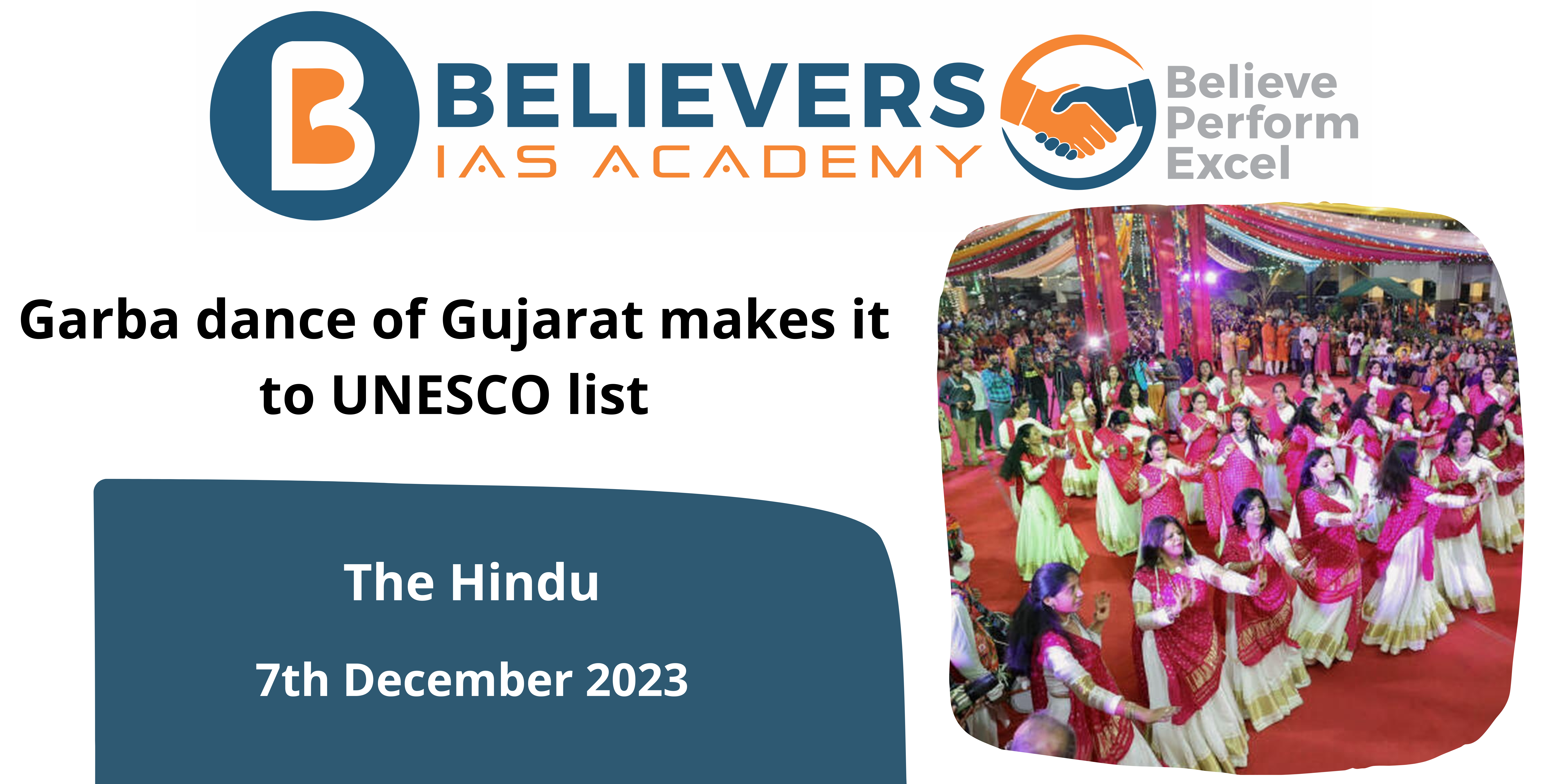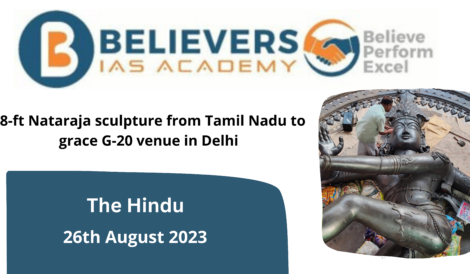Garba dance of Gujarat makes it to UNESCO list
Context
Gujarat’s traditional dance form ‘Garba’ was on Wednesday included in the list of Intangible Cultural Heritage by the United Nations Educational, Scientific and Cultural Organization (UNESCO).
Origins and Importance:
- Garba is thought to have begun as a devotional dance done in honour of the goddess Amba or Durga, who is adored during Navratri.
- The term “Garba” comes from the Sanskrit word “Garbha,” which means “womb.” The dance represents life, fertility, and the eternal cycle of creation and destruction.
The Navratri Festival:
- Garba is an essential aspect of the nine-night Navratri festival, which honours the various manifestations of the goddess Durga.
- People assemble in open places, community centres, or particularly adorned fields to conduct Garba as a form of prayer and celebration during Navratri.
Dance Style:
- The circular dancing motions of Garba are defined by participants forming concentric circles or spiral patterns.
- Dancers move beautifully and in unison, clapping their hands and tapping their feet in time with the music.
- Intricate footwork, hand movements, and colourful traditional costumes contribute to the dance’s vivid and celebratory ambience.
Musical accompaniment:
- Garba is accompanied by traditional folk music, which is frequently performed live on instruments such as dhol (drums), tabla, and other percussion instruments.
- The music is vibrant and rhythmic, increasing the dancers’ energy and excitement.
Traditional Dress:
- Traditional dress, such as Chania choli for women and kediyu with dhoti or slacks for males, is generally worn by participants.
- Mirrorwork, embroidery, and other traditional ornaments adorn the outfits.
Symbolism:
- Garba is more than just a dance; it has symbolic meaning. The cyclic movements reflect the life, death, and rebirth cycles.
- The dance is a form of devotion and worship that celebrates the feminine divine.
Aspects of Community and Social Life:
- Garba is a communal dance that promotes a sense of belonging and community. It brings together people of all ages and ethnicities to celebrate cultural traditions.
- It is not exclusive to any particular community and is enjoyed by people from a variety of religious and cultural backgrounds.
Global Reputation:
- Garba’s inclusion on UNESCO’s list of Intangible Cultural Heritage recognizes its cultural significance as well as the need to protect and promote this traditional art form around the world.




